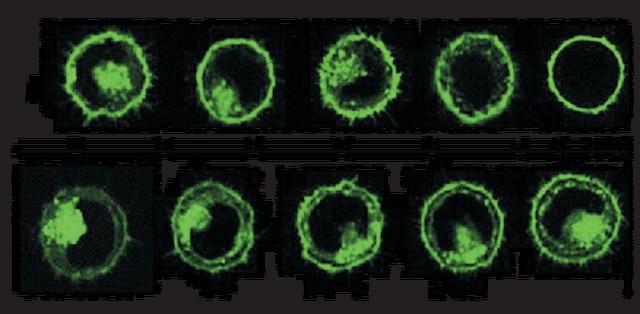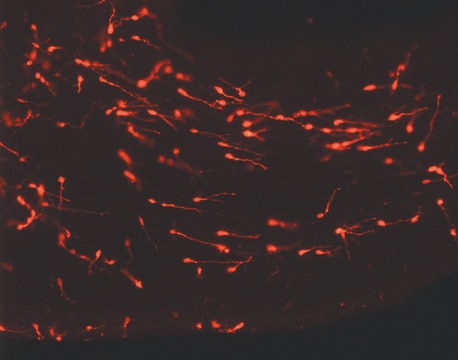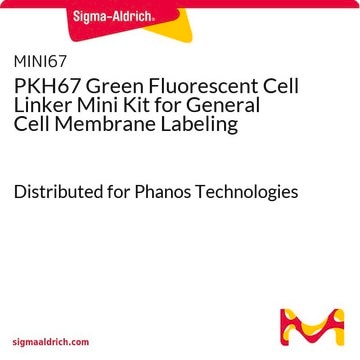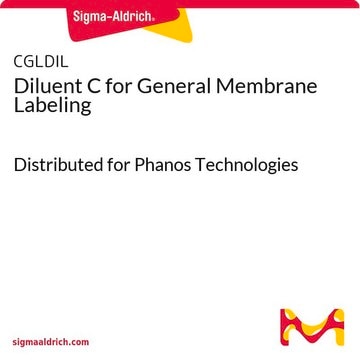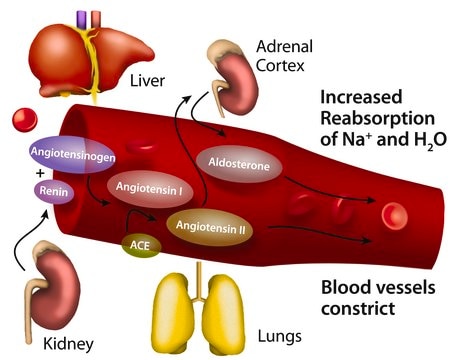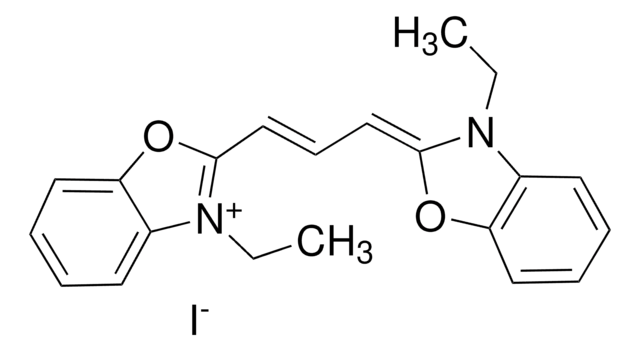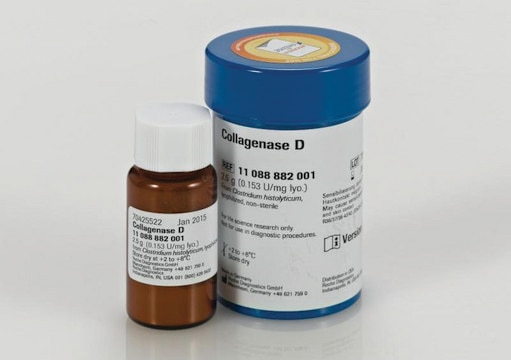42364
1,1′-Dioctadecyl-3,3,3′,3′-tetramethylindocarbocyanine perchlorate
suitable for fluorescence, BioReagent, ≥98.0% (TLC)
Synonym(s):
DiI
About This Item
Recommended Products
product line
BioReagent
Quality Level
assay
≥98.0% (TLC)
mp
68 °C (dec.) (lit.)
solubility
DMF: soluble
DMSO: soluble
methanol: soluble
fluorescence
λex 550 nm; λem 567 nm in phosphate buffer/SDS pH 7.0
suitability
suitable for fluorescence
SMILES string
[O-]Cl(=O)(=O)=O.CCCCCCCCCCCCCCCCCCN1c2ccccc2C(C)(C)/C1=C\C=C\C3=[N+](CCCCCCCCCCCCCCCCCC)c4ccccc4C3(C)C
InChI
1S/C59H97N2.ClHO4/c1-7-9-11-13-15-17-19-21-23-25-27-29-31-33-35-41-50-60-54-46-39-37-44-52(54)58(3,4)56(60)48-43-49-57-59(5,6)53-45-38-40-47-55(53)61(57)51-42-36-34-32-30-28-26-24-22-20-18-16-14-12-10-8-2;2-1(3,4)5/h37-40,43-49H,7-36,41-42,50-51H2,1-6H3;(H,2,3,4,5)/q+1;/p-1
InChI key
JVXZRNYCRFIEGV-UHFFFAOYSA-M
Looking for similar products? Visit Product Comparison Guide
Related Categories
General description
Application
- Preparation of Dil solution
- fluorescent membrane dye
- Di-I Staining
Biochem/physiol Actions
Other Notes
wgk_germany
WGK 3
flash_point_f
Not applicable
flash_point_c
Not applicable
ppe
Eyeshields, Gloves, type N95 (US)
Certificates of Analysis (COA)
Search for Certificates of Analysis (COA) by entering the products Lot/Batch Number. Lot and Batch Numbers can be found on a product’s label following the words ‘Lot’ or ‘Batch’.
Already Own This Product?
Find documentation for the products that you have recently purchased in the Document Library.
Customers Also Viewed
Articles
Nitric oxide (NO) as a signal transporter in neurons, endothelial cells and in the immune system.
Our team of scientists has experience in all areas of research including Life Science, Material Science, Chemical Synthesis, Chromatography, Analytical and many others.
Contact Technical Service

